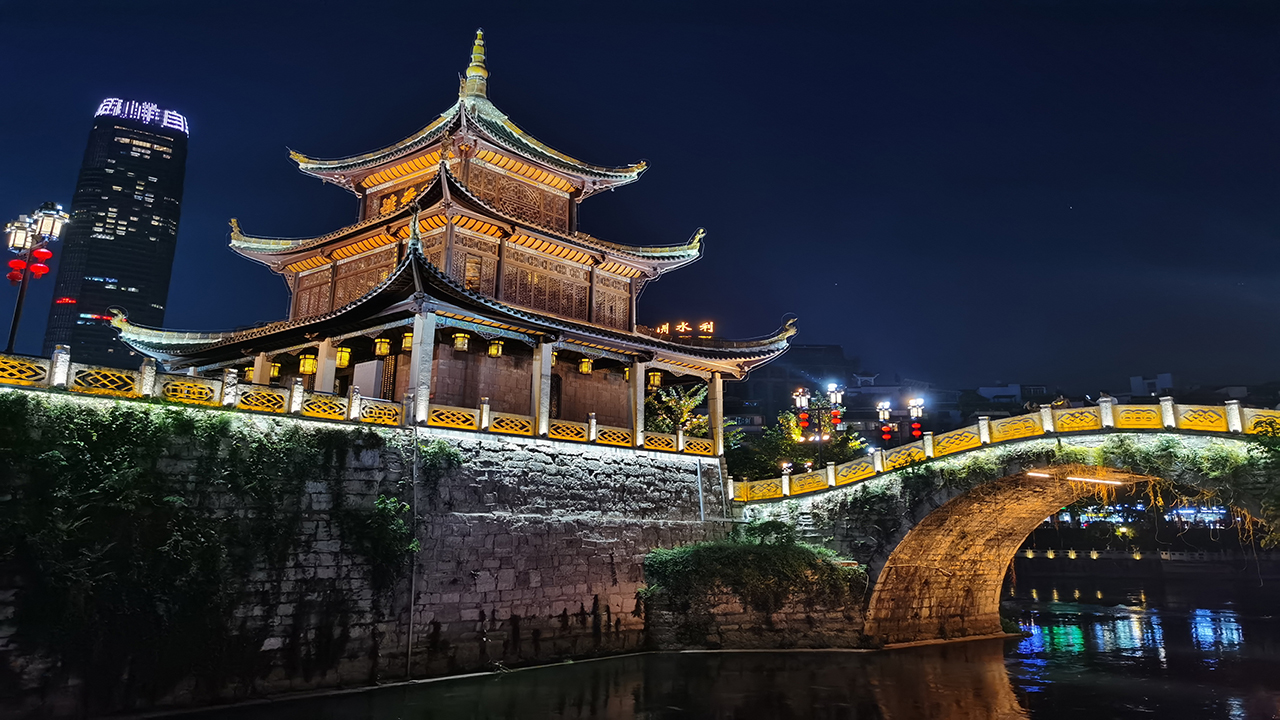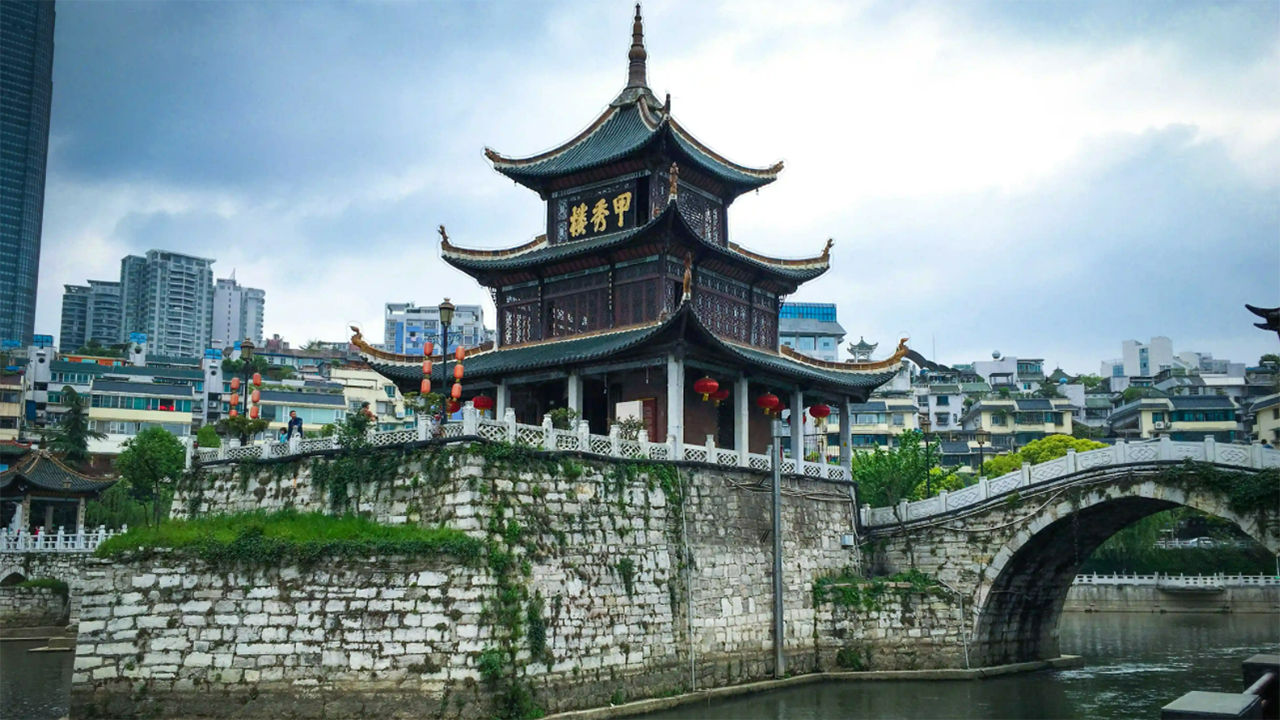Jiaxiu Tower is a famous scenic spot and cultural landmark in Guiyang, Guizhou Province. Here is an introduction to it:
Basic Information
Location:Jiaxiu Tower is located on the Wan'ao Stone in the Nanming River, at No.8, Cuiwei Lane, Xinhua Road, Guiyang City, Guizhou Province.
Architectural Style:It is a three-story, three-eaved, four-cornered, pointed attic, which is unique in the history of ancient Chinese architecture. The tower is about 22.9 meters high from the bridge deck to the top. It is a wooden structure attic with painted eaves, red lattice carved windows, white stone pillars supporting the eaves, and carved stone railings for protection.
History and Renovation
Jiaxiu Tower was first built in 1598 (the 26th year of Wanli in the Ming Dynasty) under the initiative of Jiang Dongzhi, the governor of Guizhou at that time, who hoped that Guizhou would "produce outstanding scholars" and built this tower for young scholars to study.
In 1621 (the first year of Tianqi), it was burned down and then rebuilt by Governor Zhu Xiyuan and renamed Laifeng Pavilion.
In 1689 (the 28th year of Kangxi in the Qing Dynasty), Governor Tian Wen rebuilt it and still used the old name.
In 1776 (the 41st year of Qianlong), Governor Fei Zongxi renovated it again, inscribed the plaque of the tower, and added Hanbi Pavilion on Fuyu Bridge.
In 1909 (the first year of Xuantong), it was destroyed by war and rebuilt by Governor Pang Shuhong.
During the "Cultural Revolution", the tower was in danger and the pavilion was destroyed. In 1981, it was rebuilt according to the original style.
Cultural Significance
Symbol of Guiyang:Jiaxiu Tower is not only a beautiful landscape in Guiyang but also a symbol of the city's history and culture. It has witnessed the development and changes of Guiyang for hundreds of years and is an important part of the city's cultural heritage.
Literary and Artistic Value:Since ancient times, Jiaxiu Tower has been a gathering place for literati and scholars in Guiyang. They have left many valuable cultural relics here, such as calligraphy, wood carvings, and stone tablets inscribed with poems. Among them, the most famous is the 206-character long couplet written by Liu Yushan, a scholar in the Qing Dynasty, which is hung on the door of the first floor of the tower.
Surrounding Scenery
Fuyu Bridge:Also known as Jianggong Dyke, it is like a white dragon lying on the waves, with a total length of more than 90 meters. It passes through the downstairs and connects the two banks. There is a small pavilion called Hanbi Pavilion on the bridge, and the pillars of the pavilion are engraved with the couplets of Wang Bingao, the magistrate of Guiyang in the Xianfeng period of the Qing Dynasty.
Cuiwei Garden:Located behind Jiaxiu Tower, it was originally called Nan'an and is a courtyard in the style of a Suzhou garden in the Ming and Qing dynasties. It is composed of ancient buildings such as Gongnan Pavilion, Cuiwei Pavilion, and Longmen Academy.





